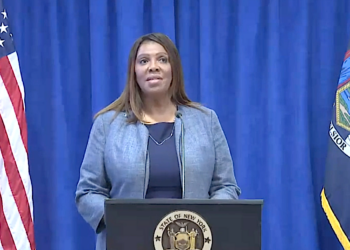Well, residents of Westchester County and points north are being taxed again.
But Albany isn”™t responsible and neither are the respective counties.
This time the blame goes to the Metropolitan Transportation Authority, which voted to raise fares on commuter railroads, subways and buses as well as tolls on bridges and tunnels.
Starting in March, riders who use MetroCards or multiple-ride tickets will have to pay more. A 30-day card will rise from $76 to $81; a seven-day card will go up a dollar to $25. A new 14-day card will cost $47.
The MTA will keep the base ride at $2, but other than tourists, few pay as they go.
It doesn”™t sound like much, but it”™s still a tax. When you start multiplying it out, that $5 jump means $260 more a year out of pocket.
Also effective in March, the cost of most weekly and monthly tickets on the Metro-North Railroad will rise in varying amounts. For example, a monthly pass from White Plains to Grand Central Terminal will rise from $184 to $191. The farther you start up the line, the more a rider will pay; Croton Falls, $289 to $300.
On MTA bridges and tunnels, the E-ZPass toll for cars will increase by up to 3.8 percent.
Costs aside, one of the disturbing aspects ”“ as it is every time the MTA raises fares ”“ is the way the authority ignores the riders and drivers who voice their opposition or concerns at the public hearings. The rider-be-damned attitude is tending to be wearing. And as we ride the “green” wave, this only serves to discourage the use of public transportation at a time when it needs to be encouraged.
This is the third fare increase riders have had to absorb over the past four years.
The question that always needs to be asked is whether the increase will be offset by service improvements. Uh-oh, we hear a collective groan.
Timing is everything.
Andrew M. Saul, who represents Westchester on the MTA board, voted to hold off on the increases. “I think there”™s no harm in waiting until July 1 (referring to an amendment that was defeated to delay the fare hikes), to keep the pressure on Albany and to ensure they come through for the MTA. By taking the pressure off Albany at this point, it”™s a bad mistake for us.”
State Comptroller Thomas P. DiNapoli concurred.
Â
“As our August MTA report indicated, I question the timing of this decision. The MTA should have held off increasing fares until there was a clearer picture of what support from the state would be included in the 2008 budget process. But now that the board has voted to raise fares, and we have heard the welcome news that Gov. Spitzer is committed to the increased funding levels requested for 2010, the MTA must do a better job of managing its costs while maintaining the levels of service New Yorkers deserve and require.”
A state commission studying the congestion pricing plan by Mayor Michael Bloomberg is expected to hand over its findings to state lawmakers in the spring. It will probably give it high marks since it will be a massive revenue generator. The state lawmakers will review the recommendations and then pass it despite some opposition led by Assemblyman Richard Brodsky.
Congestion pricing was raised in 1987 when the city tried to come to terms to meeting the federal Clean Air Act. Mayor Ed Koch had endorsed the idea but was met with opposition from business. Congestion pricing was even considered in the mid-1990s to alleviate traffic on the Tappan Zee Bridge.
It”™s interesting to note that the pricing scheme was thought up by William Vickrey, a Westchester resident and the winner of the Nobel Prize in Economic Science in 1996. As legend has it, he was on a train to his Scarsdale home from Yale University and noticed the high number of empty seats. He figured if the railroad dropped its price more during off-peak hours more people would be enticed to ride. And if it worked for trains, it would work for highways and subways. His ideas were given little attention in the United States, but caught on in England and other international cities.
The MTA is asking the state for some serious money ”“ $1.5 billion ”“ over the next two years for operations and projects.
Assuming ”“ which we hate to do ”“ that the congestion pricing plan is approved, a segment of that taxing vehicle should be siphoned off to the MTA. Then, at least, the MTA will have more money in its coffers when it proposes another fare hike in two years.
Â

















